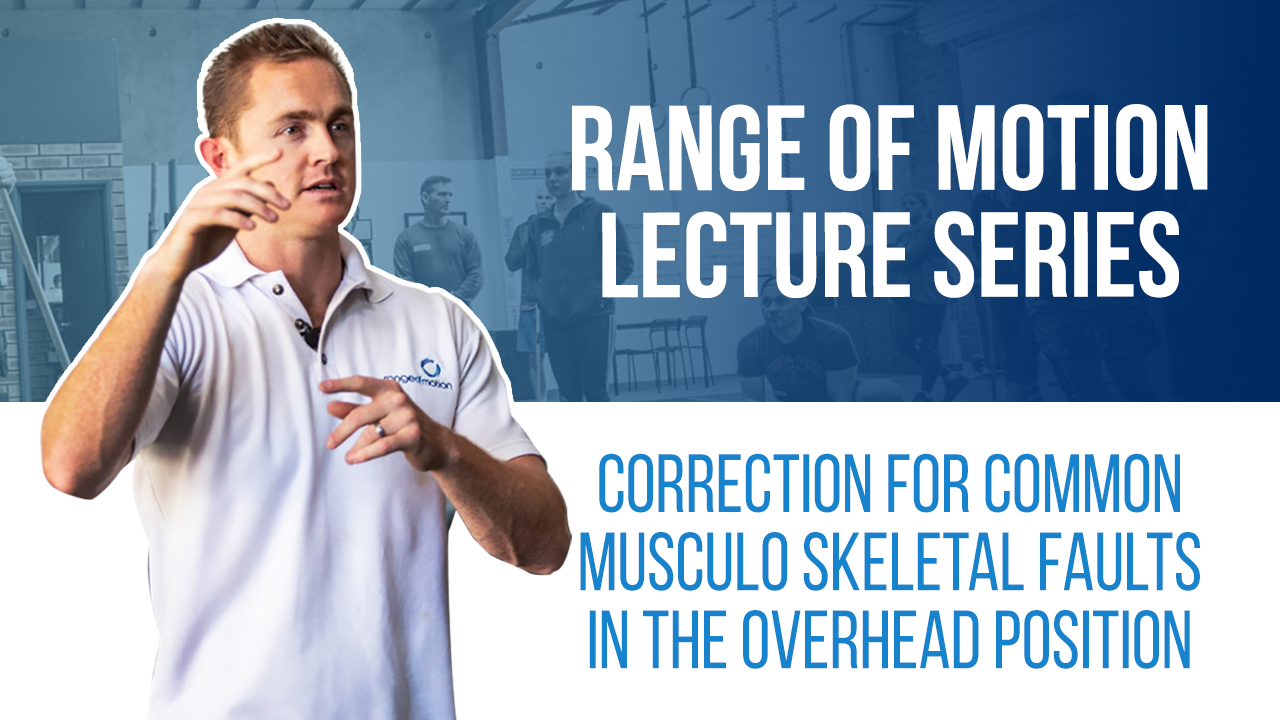Transcribed from video:
– Over head. Someone’s overhead squatting, and they do this sort of thing. Who does that? Yeah, like lots of people, yeah. People in general, yeah. They squat, the shoulder internally rotates. Why does the shoulder internally rotate?
– [Lady] ‘Cause of light perfection?
– It can be a lot of different things. Because if someone’s achilles are tight the hips go back, because the knees can’t come forward. Therefore the torso comes forward. You can’t overhead squat with the bar out here, can you? If this same person has a lack of flection, through their shoulder, that’s as far back as they can go. But I still can’t overhead squat with the bar right in front of me. But I can if I do this. Now the bar is back, and that’s, you guys would’ve seen that, right? That’s squat position. And you’re like, ah you’ve got to get your armpit forward, fix the shoulder, fix the shoulder. It could be coming from your achilles, or from the hip, or from the thoracic spine, or from lack of flection through the shoulder, or all of those things together. So work out where the problem is stemming from It could be anywhere there up the chain. We talked about our four benefits of pinning. One is improving positions up and down the chain.
– [Lady] Just a quick question, would you kind of just always go like around that area, look at where the most of area is, or would you start from the ground, because if you, you can work on the shoulder. If you’re not fixing that.
– It doesn’t really help. Yeah, so I would do something like, okay, put a pair of lifting shoes on. Stand with your heel on a plate. Wow, that fixed you shoulder. How does standing on a plate fix your shoulder? Turns out there’s nothing wrong with the shoulder. Yeah, it turns out the problem is further down the chain. So this is a really good example here because this could be an issue of ankle flexibility, like I said, lack of thoracic extension, not being stable enough in external rotation, becomes a stability exercise. So working on scapula stability. Your ability to elevate, depress, retract, protract your scaps. So it could become a scapula stability issue, which we’re going to talk about in a moment, with the push ups. Lumbar hyper extension, here you’re going to this position. What does this look like that we’ve done today? Up, okay. So if someone’s going into this but we want to fight that, what’s the opposite of an arch hold? You’re hollow all here. So the hollow holds are going to be great to help to fix this problem. Also, what muscles are not turning on here? Obviously my abs are not turning on. What else? Glutes. I turn my glutes on, my rib cage locks down, I’m now back into my hollow position. So activation exercises for your glutes. And again, if they’re hyper extending through their lumbar spine, it’s quite possibly look a bit further up the chain on what’s happening in the shoulder. Because maybe they’re only hyper extending here, ’cause you’re saying, get that bar back, over your shoulder blades. And they do. The issue is stemming from the shoulder. So it’s not always look down to see if the issue’s coming from the ankles from the ground. If you have someone hyper extending their lumbar spine, the issue may be from here. From further up the chain. All goes wide, as they press. We’ve talked about that need for external rotation.





